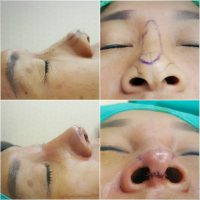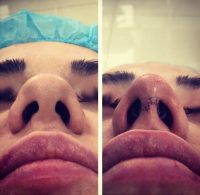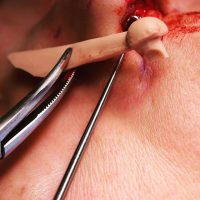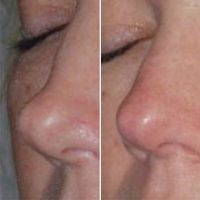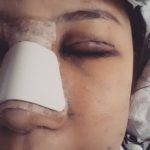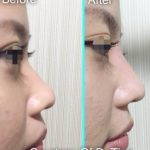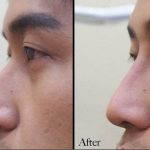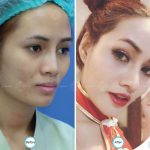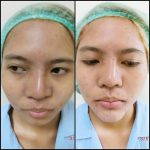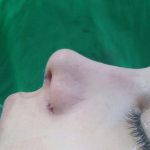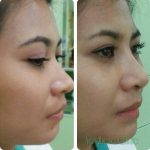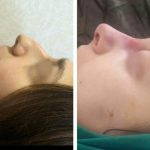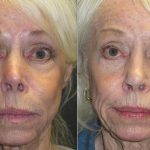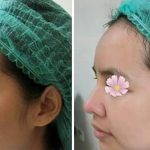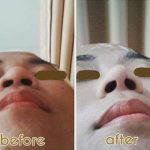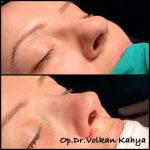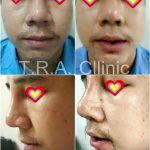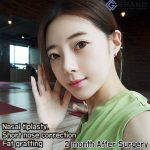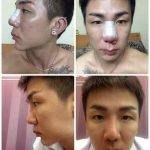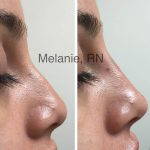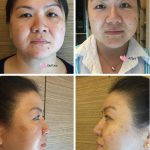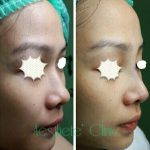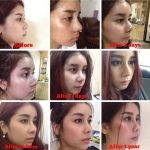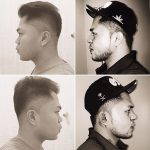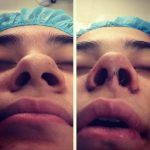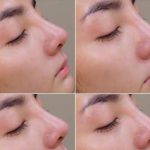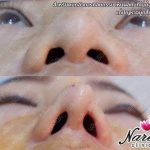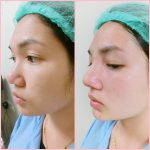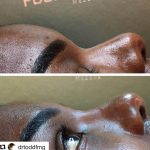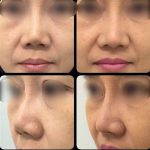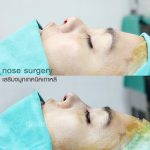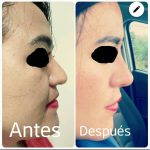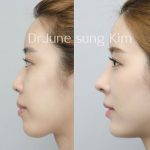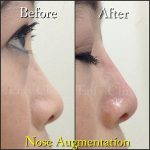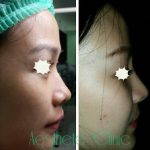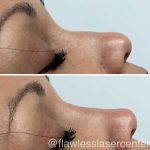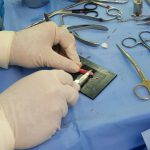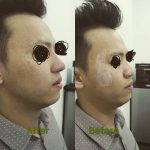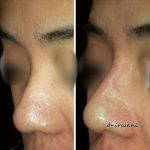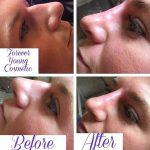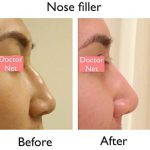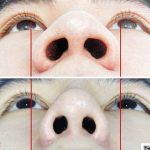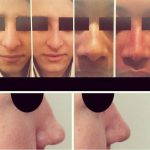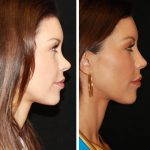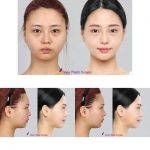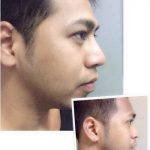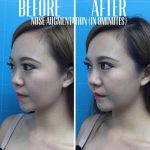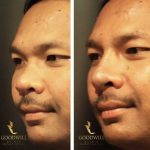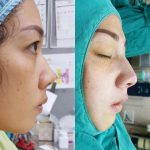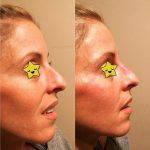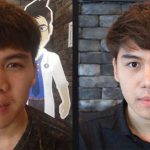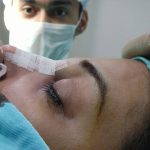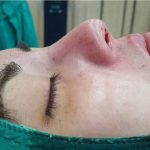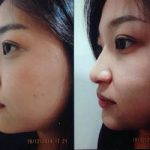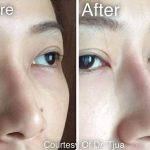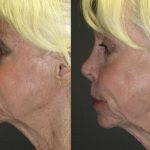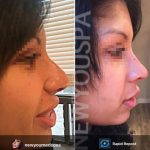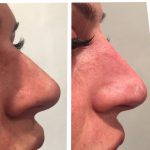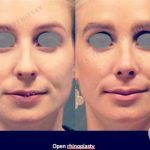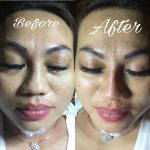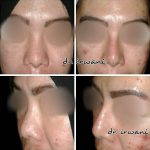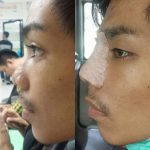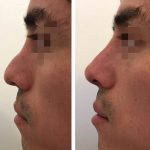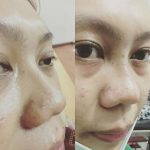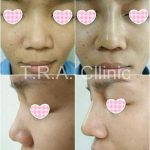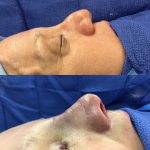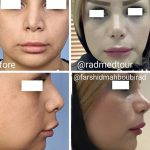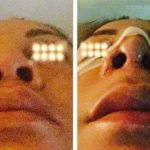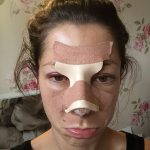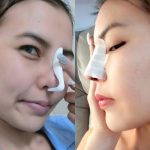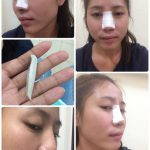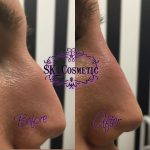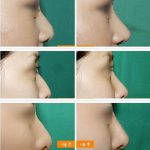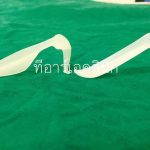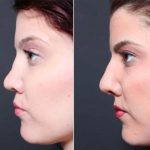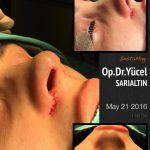Augmentation Rhinoplasty Before & After
Patients are turning to plastic surgeons with a variety of requests. One of them is an increase of the flat nose. Usually we are talking about correction not very pronounced retraction of the nasal bridge and to eliminate the effect of the nose oblateness.
Most often, these defects arise as a result of trauma or purulent inflammation, but sometimes flat nose shape is predetermined at the genetic level.
The leading centers and clinics of plastic surgery of America, Israel, Germany, South Korea and Austria to improve the appearance of a flat nose is performed corrective surgery, called augmentation rhinoplasty.
Its essence is to place under the skin of the nose a special framework, on which charged with the task to raise and increase bridge of the nose. This framework may be made of bone tissue, cartilage, and some biocompatible synthetic materials that are safe for the organism and does not provoke allergic reactions.
In the opinion of authoritative experts, the best are the frameworks of the patient’s own tissue, which does not involve the risk of rejection.
By modern methods the installation of framework is made through small access the inside nostrils or through an incision in the wall separating the nostrils, and takes on average a couple of hours.
The bone implant is taken from the ribs or of the outer surface of of the cranium, or from of the iliac crest, or the back of the elbow, ie, from that part of the musculoskeletal system of the patient, from which it is possible to carve out the required bone flap without serious consequences.
When it is required to prepare the cartilaginous framework, its generally is prepared from right and / or left an auricle or from the nasal septum. If the nose became flat as the result of injury, often in addition to external deformation occurs a deviated septum that separates the the nasal cavity into two parts, which can cause difficulty in nasal breathing, as well as the source of a number of other problems, including snoring (rhonchopathy), chronic sinusitis (inflammation paranasal sinuses), frequent nasal bleeding, allergic rhinitis, excessive dryness of the nasal mucosa, etc. Concomitant nasal septum deviation may be removed directly during rhinoplasty and such interference is called a septoplasty.
Augmentation rhinoplasty is based on the transplantation of own cartilage / bone tissue of the patient, can be performed only by highly skilled plastic surgeon who not only knows perfectly the anatomy, but also has many years of experience in the surgical correction of the nose.
Recovery period after augmentation rhinoplasty depends on the individual and age characteristics of the patient’s body. The first 2-5 days after surgery need to breathe through the mouth due tampons in the nose. A plaster bandage on your nose superimposed about ten days.After discharge from the hospital the patient will need to see your doctor regularly and comply with the rules, involving a certain limitation of physical activity, from cosmetic procedures, from drinking too hot and very cold food, from the swimming pool, sauna, bath and avoid wearing glasses.
The first results of the operation, in principle, can be assessed after 1.5 months., But the final effect is not earlier than in a year.
The most frequent requests from our patients, associated with a decrease in the nose – to narrow the nose tip, to reduce or remove the hump, to narrow or expand the nasal bridge.
There are also patients who want to increase their nose using augmentation rhinoplasty. Since the nose is the center of the face, it is difficult to disguise its shortcomings. This refers to the saddle nose. As a rule, this is due to the previously conducted rhinoplasty, nasal trauma, congenital anatomical features.The increase in the nose can be performed for aesthetic and medical indications. The increase in the nose may affect the individual structures of the nose – the tip of the nose, wings, increasing the bridge of the nose. Sometimes rhinoplasty is performed to increase the projection of the nasal tip.
Typically, for augmentation rhinoplasty are used techniques to transplant cartilage grafts. Cartilages can be taken from the septal cartilage, and if this is not sufficient – can be taken from the ear or ribs. Plastic surgeons use the patient’s own tissue for transplant, which are perfectly take roots, unlike silicone implants.
Thus, the essence of the operation is to install framework under the skin of the nose, which raises the nose. Cartilage grafts are also used to model the tip of the nose and its strengthening. Some slight deformations can be eliminated by injection under the skin fat or hyaluronic acid and correction via fillers of the last generation. Typically, the surgeon performs a detailed analysis of the nose and face for planning upcoming correction of the nose.Pictures before and after augmentation rhinoplasty are an important evaluation criterion of the professionalism of plastic surgeon. You can assess the dynamics of change – what was before augmentation rhinoplasty, and what has become after augmentation rhinoplasty. Pictures will help you in choosing of a plastic surgeon. All the photos before and after augmentation nose job are posted with the consent of the patients!
Augmentation Rhinoplasty Before & After
- Augmentation Nose Job Is Performed To Increase The Projection Of The Nasal Dorsum
- Asian Dorsal Augmentation
- Asian Nose Augmentation For Man
- Asian Nose Augmentation Photos (1)
- Asian Nose Augmentation Photos (2)
- Asian Nose Augmentation Photos (3)
- Asian Nose Augmentation Photos (4)
- Augmentation Nose Bridge Before And After (1)
- Augmentation Nose Bridge Before And After (2)
- Augmentation Nose Bridge Before And After (3)
- Augmentation Of Nose Before And After Photos (1)
- Augmentation Of Nose Before And After Photos (2)
- Augmentation Of Nose Before And After Photos (3)
- Augmentation Of Nose Before And After Photos (4)
- Augmentation Of The Dorsum
- Augmentation Of The Nose Photos (1)
- Augmentation Of The Nose Photos (2)
- Augmentation Of The Nose Photos (3)
- Augmentation Of The Nose Photos (4)
- Augmentation Of The Nose Photos (5)
- Augmentation Rhinoplasty Before And After Photos (1)
- Augmentation Rhinoplasty Before And After Photos (2)
- Augmentation Rhinoplasty Before And After Photos (3)
- Augmentation Rhinoplasty Before And After Photos (5)
- Augmentation Rhinoplasty Before And After Photos (6)
- Augmentation Rhinoplasty Before And After Photos (7)
- Augmentation Rhinoplasty May Be Indicated For Functional Concerns
- Augmentation Rhinoplasty O Raise The Height Of The Dorsum
- Augmentation Rhinoplasty Pdf
- Augmentation Rhinoplasty Procedure For African American
- Augmentation Rhinoplasty Procedure Photos (1)
- Augmentation Rhinoplasty Procedure Photos (2)
- Augmentation Rhinoplasty Procedure Photos (3)
- Augmentation Rhinoplasty Recovery Pictures
- Augmentation Rhinoplasty Surgery Image
- Augmentation Rhinoplasty To Correct Overresection Of The Nasal Dorsum
- Augmentation Rhinoplasty Wiki
- Augmentation Rhinoplasty With Silicone Implants (1)
- Augmentation Rhinoplasty With Silicone Implants (2)
- Augmentation Rhinoplasty With Silicone Implants (3)
- Augmentation Rhinoplasty With Silicone Implants (4)
- Autologous Implants For Nose Augmentation
- Dorsal Augmentation Rhinoplasty Pictures
- Dorsal Augmentation
- Implants For Rhinoplasty
- Male Tip Augmentation Rhinoplasty Before And After
- Nasal Tip May Also Be Augmented
- Nose Augmentation Before And After (1)
- Nose Augmentation Before And After (2)
- Nose Augmentation Before And After (3)
- Nose Augmentation Before And After (4)
- Nose Augmentation Before And After Images (1)
- Nose Augmentation Before And After Images (2)
- Nose Augmentation Before And After Images (3)
- Nose Augmentation Before And After Images (4)
- Nose Augmentation Filler Before And After
- Nose Augmentation For Man Without Surgery
- Nose Augmentation Injection Before And After
- Nose Augmentation Procedure Before And After Pictures (1)
- Nose Augmentation Procedure Before And After Pictures (2)
- Nose Augmentation Procedure Before And After Pictures (3)
- Nose Augmentation Procedure Before And After Pictures (4)
- Nose Augmentation Rhinoplasty Before And After (1)
- Nose Augmentation Rhinoplasty Before And After (2)
- Nose Augmentation Rhinoplasty Before And After (3)
- Nose Augmentation Rhinoplasty Before And After (4)
- Nose Augmentation Rhinoplasty Before And After (5)
- Nose Augmentation Tip Plasty Before And After
- Nose Augmentation To Widen The Dorsum
- Nose Augmentation With Fillers Photos
- Nose Augmentation With Radiesse Non-surgical
- Nose Bridge Augmentation For Man (1)
- Nose Bridge Augmentation For Man (2)
- Nose Bridge Augmentation For Man (3)
- Nose Bridge Augmentation For Man (4)
- Nose Implant (augmentation Rhinoplasty) Surgery
- Nose Job Augmentation To Camouflage Deviations
- Nose Tip Augmentation (1)
- Nose Tip Augmentation (2)
- Nose Tissue Augmentation Before And After
- Open Augmentation Rhinoplasty
- Radix Augmentation Rhinoplasty Pic
- Rhinoplasty Augmentation Plastic Surgery Pic
- Rhinoplasty Bridge Augmentation Picture Before And After
- Rhinoplasty Implants Before And After Photos
- Rhinoplasty Versus Augmentation Rhinoplasty Images
- Silicone Implant For Augmentation Rhinoplasty
- Skin Grafts May Also Be Necessary For Augmentation Rhinoplasty
- Surgery To Augment The Nose
- Synthetic Implants For Augmentation Rhinoplasty
- What Is A Nose Augmentation Photo
- What Is Augmentation Rhinoplasty Photo
